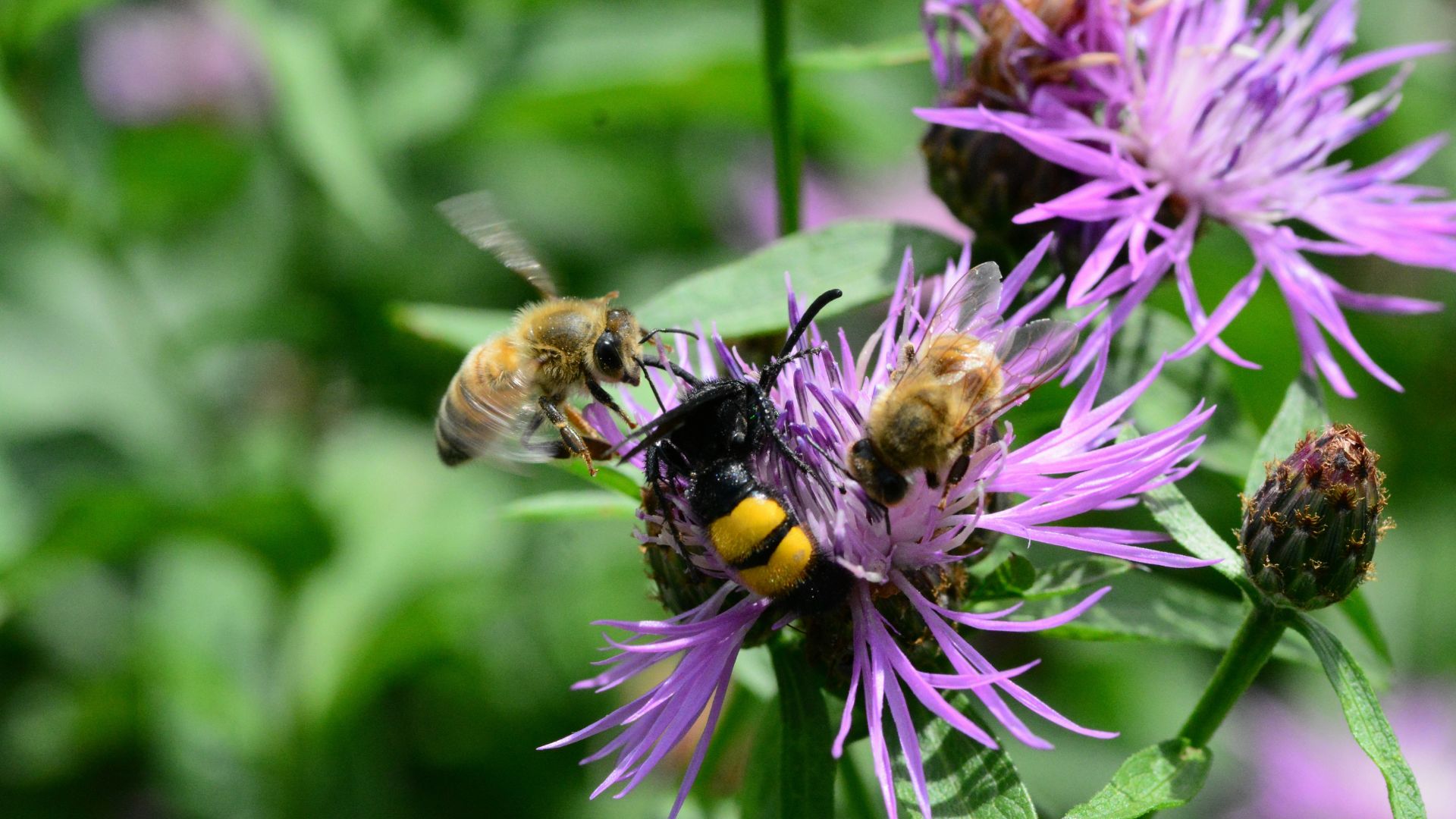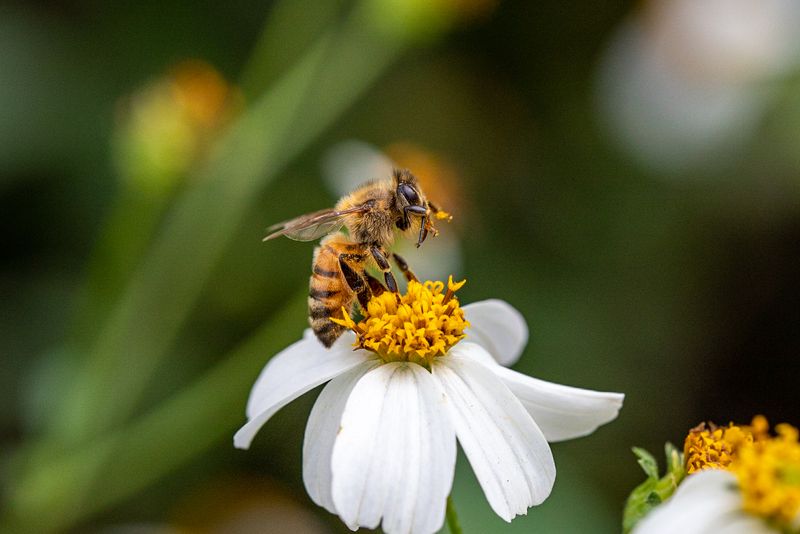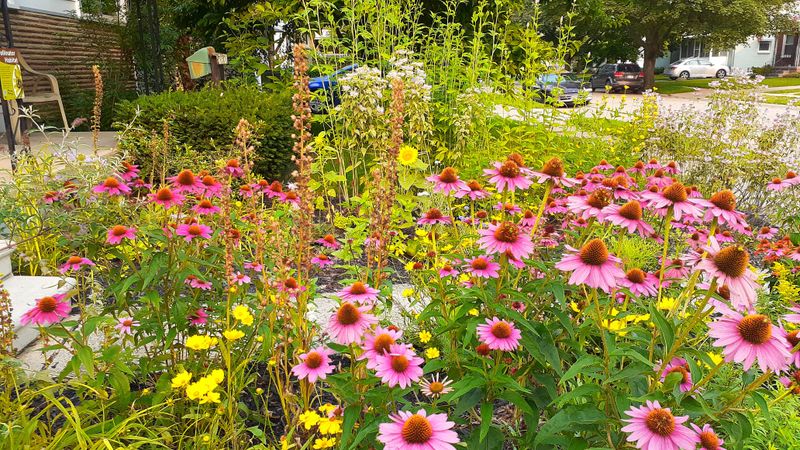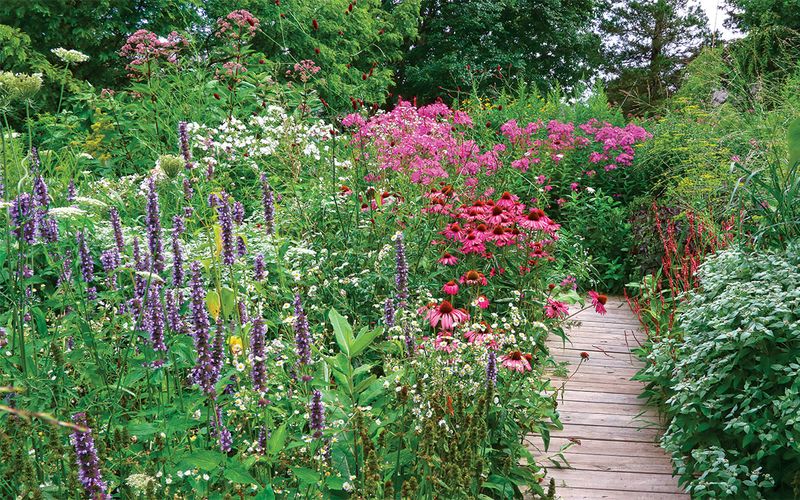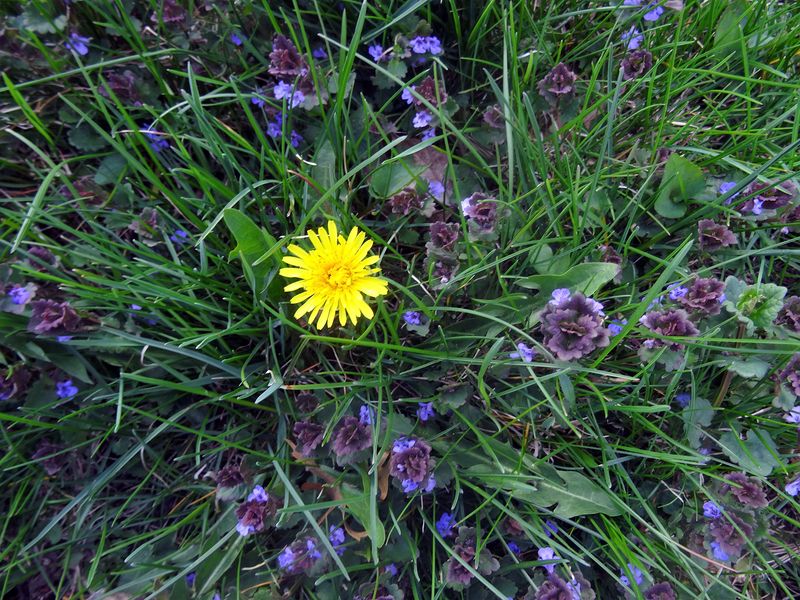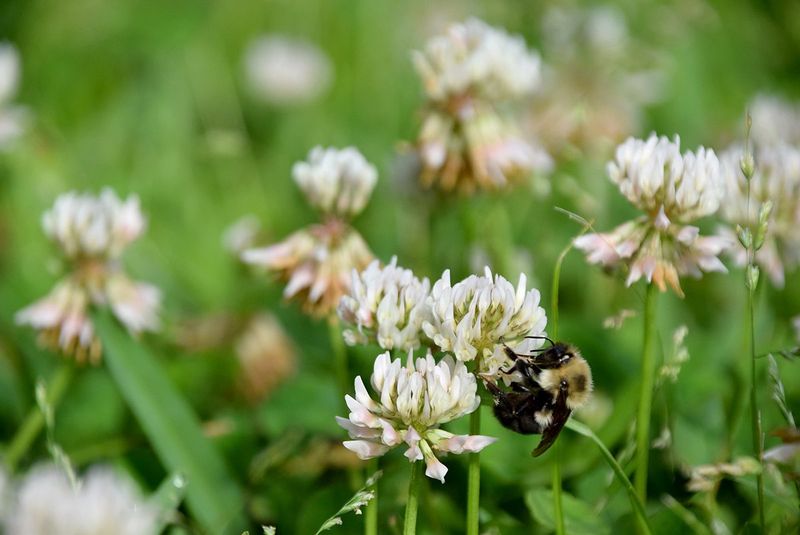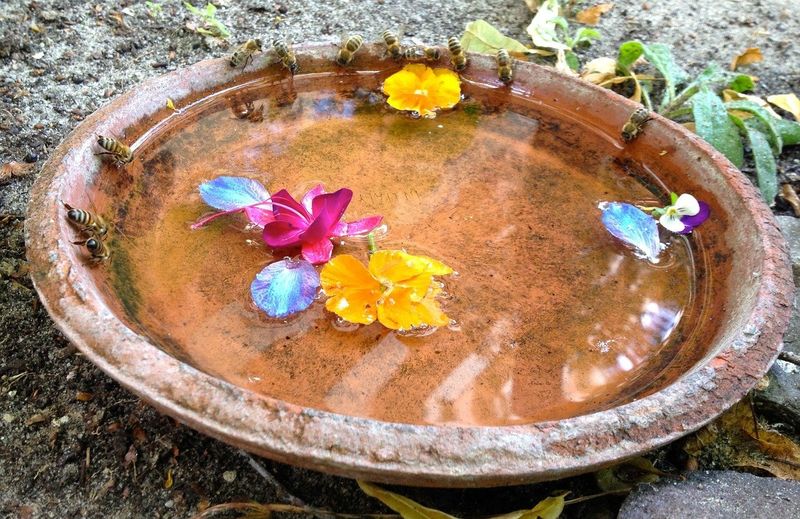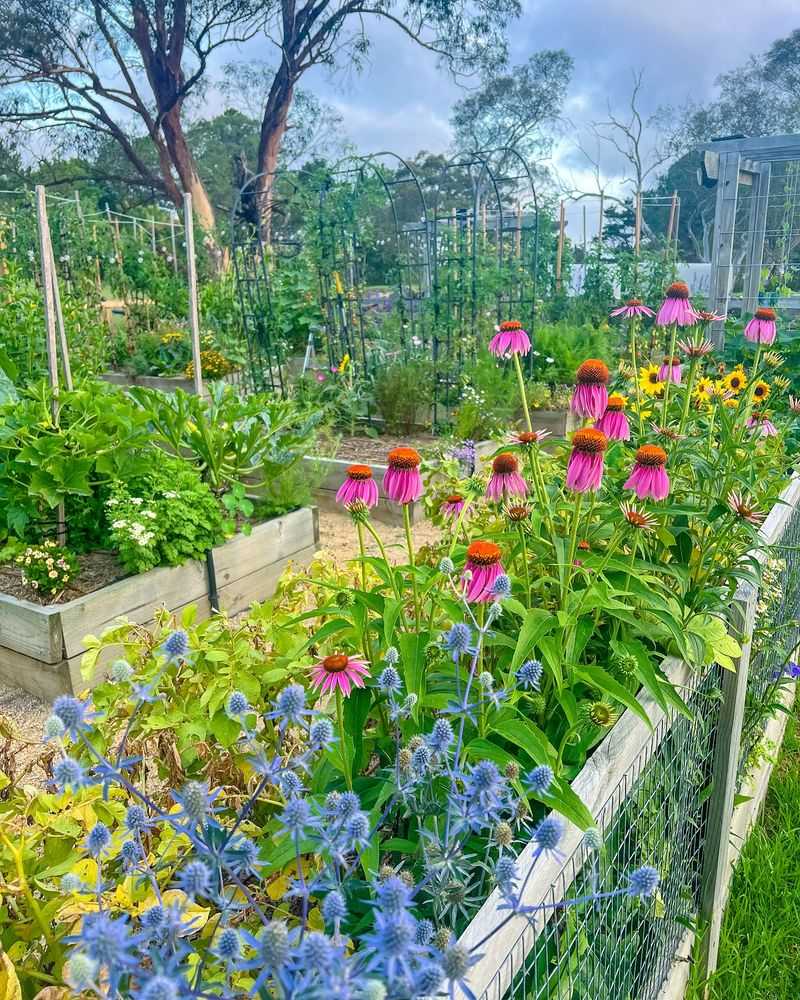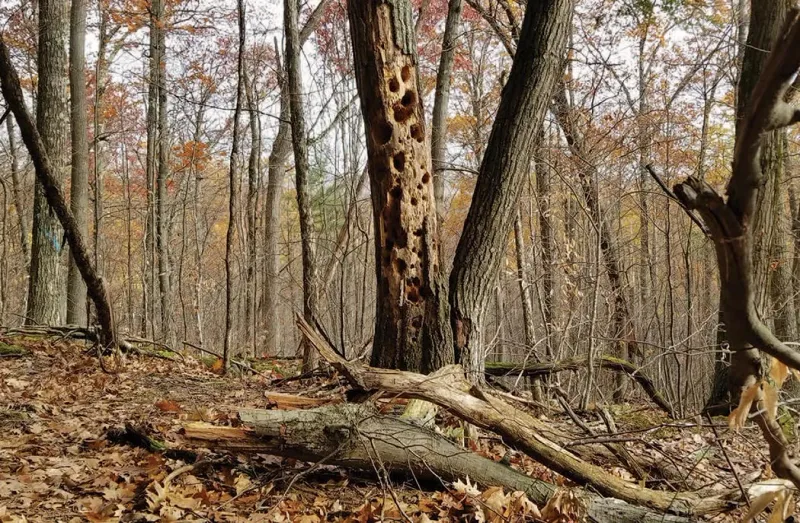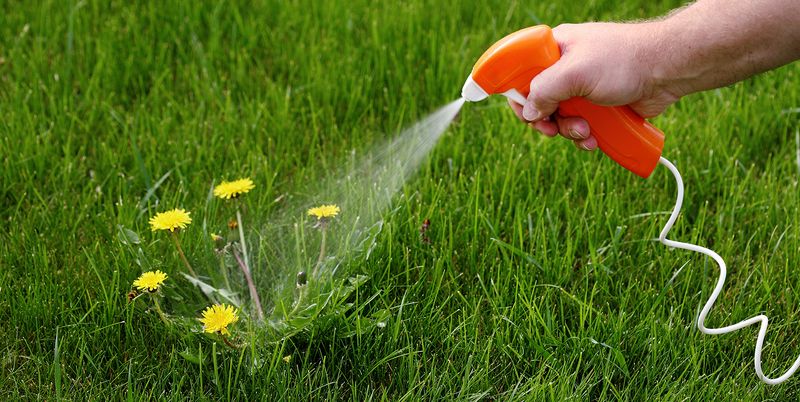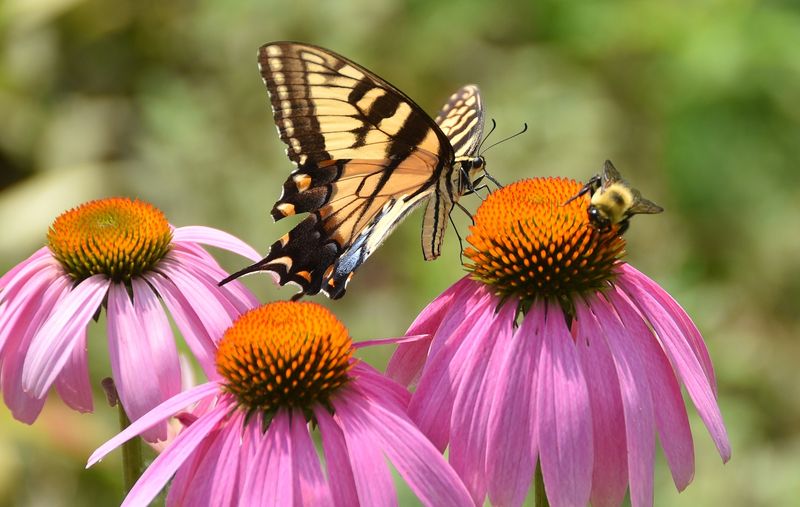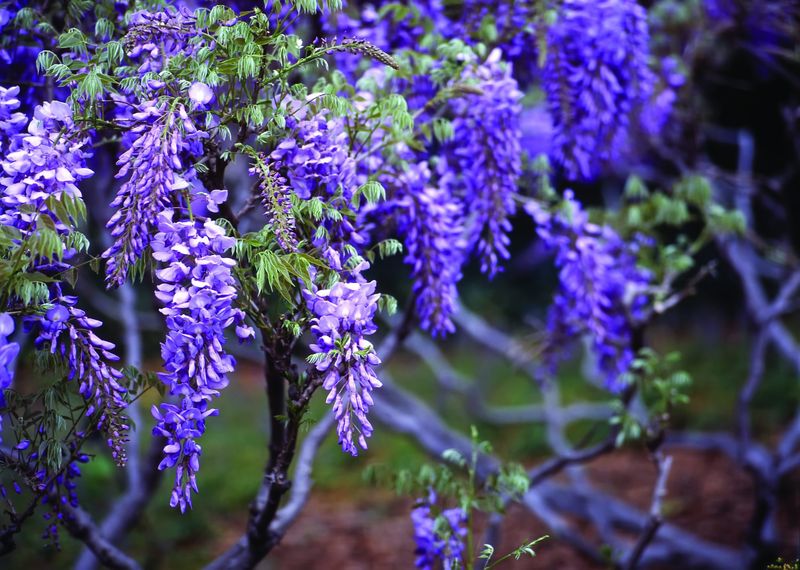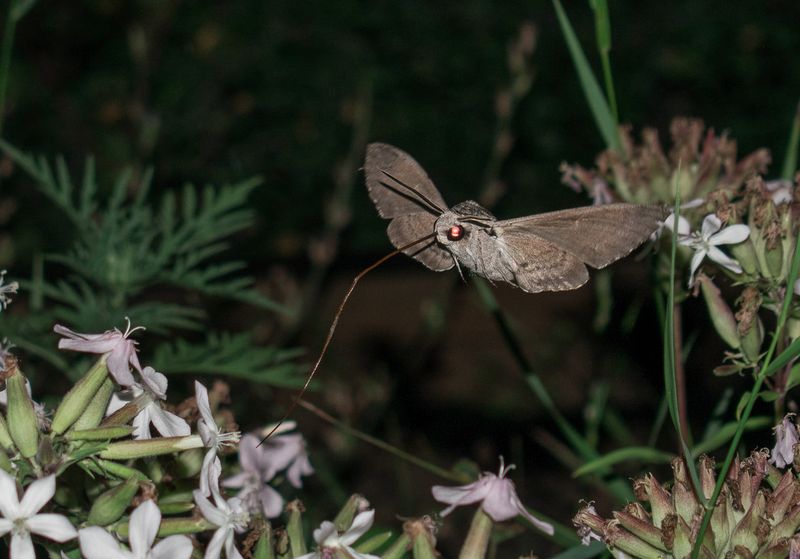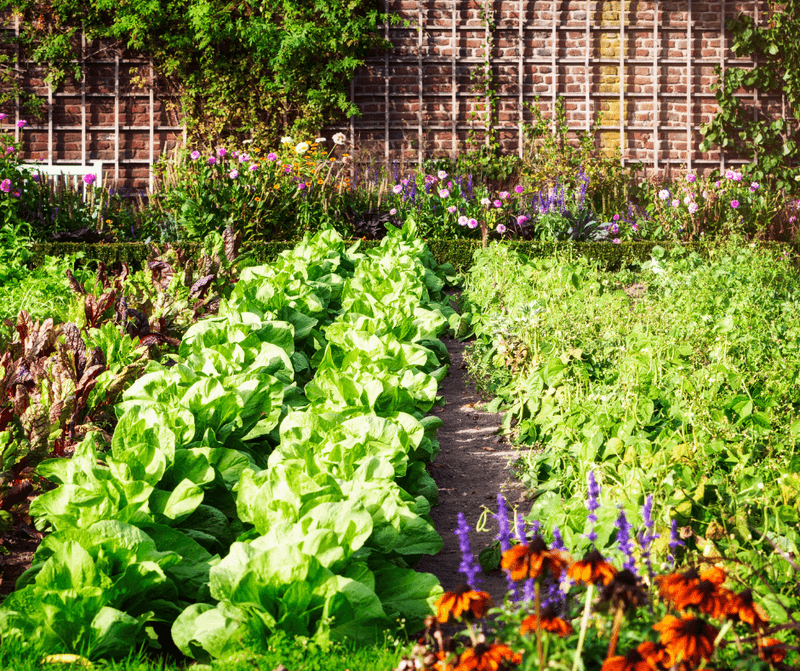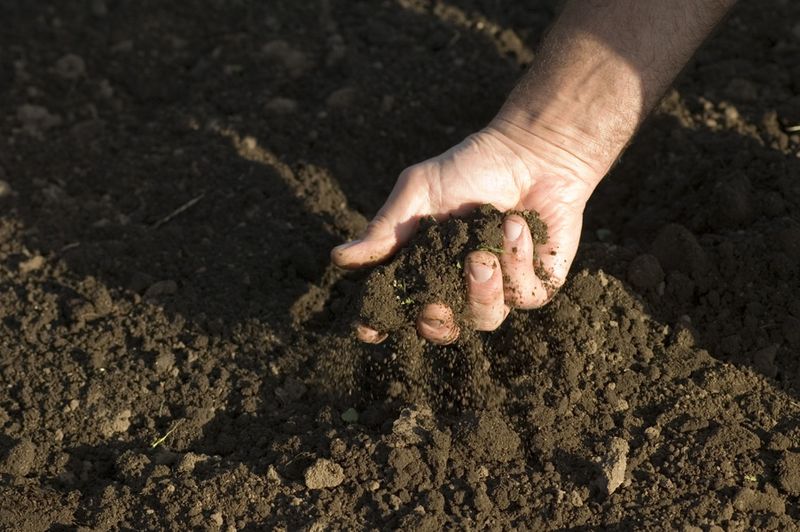Gardening is one of those hobbies that fills your heart just as much as it fills your yard with color—but even with the best intentions, we sometimes make choices that unknowingly turn pollinators away. Pollinators like bees, butterflies, and even hummingbirds play a huge role in helping our plants produce fruit, seeds, and those blooms we love so much.
But things like using certain pesticides, planting only one type of flower, or keeping the garden too tidy can make it hard for these little helpers to feel at home. I’ll walk you through some common missteps—ones I’ve made myself—and show you how easy it is to turn things around.
With a few thoughtful tweaks, you can turn your garden into a true pollinator haven where life thrives, color explodes, and every bloom gets its moment to shine.
1. Using Chemical Pesticides
Many gardeners reach for chemical pesticides at the first sign of pests, but these substances can harm beneficial pollinators. Chemicals often don’t discriminate between harmful insects and helpful ones like bees.
Instead of reaching for the spray, consider organic alternatives. Neem oil and insecticidal soaps can target specific pests without widespread harm. Incorporating companion planting can also deter pests naturally.
By choosing plants that repel certain bugs, you can maintain a healthy balance. Remember, a few pests in your garden are natural and can even provide food for birds and beneficial insects.
2. Planting Only Non-Native Species
Gardens filled exclusively with non-native plants can be a challenge for local pollinators. These plants may not provide the right nutrients or blooming schedule that native pollinators depend on.
Incorporating native wildflowers and shrubs offers a familiar habitat with the necessary pollen and nectar. Native plants also tend to be more resilient and better suited to local climates, reducing the need for maintenance.
By creating a blend of native and non-native species, you can ensure continuous blooming and a supportive environment for all pollinators.
3. Overly Tidy Garden Beds
A perfectly manicured garden might look appealing, but it can be less inviting for pollinators. Overly tidy beds remove natural materials that many insects use for shelter and breeding.
Leaving some leaf litter or fallen stems can create hidden spaces for pollinators. It also provides habitats for beneficial insects that control pests.
Another option is to let a small section grow wild, encouraging biodiversity. This seemingly messy approach can lead to a healthier, more beautiful garden buzzing with life and activity.
4. Removing Flowering Weeds
It’s tempting to pull out every weed in sight, but flowering weeds like dandelions and clover are vital food sources for pollinators. Before ripping them out, consider their role in the ecosystem.
If you must remove them, try to do so after they have finished blooming. Alternatively, designate an area where these weeds can grow, providing a buffet for pollinators.
This approach keeps your garden tidy while supporting the needs of beneficial insects. Embracing a bit of wildness can add unexpected beauty and ecological balance.
5. Mowing Too Frequently
Frequent mowing might give your lawn a neat appearance, but it can destroy habitats and food sources for pollinators. Allowing some patches of clover or other flowering plants to flourish can provide necessary sustenance.
Adjusting your mowing schedule to let these plants bloom occasionally can make a significant difference. Leaving clippings on the lawn can also add nutrients to the soil, promoting healthy growth.
Striking a balance between a well-kept lawn and a thriving pollinator habitat can enhance the beauty and functionality of your garden.
6. Not Providing Water Sources
Pollinators need water just like any other living creature, but many gardens lack this essential resource. A shallow water source with stones for perching can attract bees and butterflies.
Bird baths or small ponds can double as decorative elements while serving the needs of wildlife. Changing the water regularly prevents it from becoming a breeding ground for unwanted insects.
By providing fresh water, you’re creating a hospitable environment that supports a wide range of beneficial creatures in your garden.
7. Overusing Synthetic Fertilizers
Synthetic fertilizers might promise quick results, but they can disrupt soil health and deter pollinators. These chemicals can leach into the soil, affecting the microorganisms that support plant and insect life.
Opting for organic fertilizers or compost enriches the soil naturally. Composting kitchen scraps or using well-rotted manure can provide the nutrients your garden needs.
By nurturing the soil, you create an environment where plants thrive and pollinators feel welcome. A healthy garden is more than just flowers; it’s a balanced ecosystem.
8. Planting Single-Variety Gardens
Gardens with limited plant variety might look uniform, but they fail to meet the diverse needs of pollinators. Pollinators rely on a range of plants for food and reproduction.
Mixing flowers, shrubs, and trees ensures a continuous supply of nectar throughout the growing season. Diversity attracts different pollinators, supporting a balanced ecosystem.
Experimenting with various textures, colors, and heights not only creates visual interest but also promotes biodiversity. An inviting garden offers something for every visitor, from tiny bees to majestic butterflies.
9. Removing Dead Wood And Stems
Dead wood and stems may seem unsightly, but they provide crucial habitats for many pollinators. Insects like beetles and solitary bees use these materials for nesting.
Instead of removing every dead branch, consider leaving some in place. Create a log pile or a designated area for natural decay.
This not only supports pollinators but also enriches the soil as the wood breaks down. Embracing natural processes in your garden can lead to a thriving ecosystem filled with curious visitors.
10. Using Herbicides On Lawns
Herbicides can create a pristine lawn, but they can also deter pollinators by removing flowering plants. Many herbicides remain in the soil, affecting plants and insects long after application.
Opting for natural weed control methods can preserve these vital food sources. Hand-pulling weeds or using mulch can keep your lawn healthy without harming pollinators.
By reducing reliance on chemicals, you foster a garden that’s safe and inviting for all creatures. A natural lawn may have imperfections, but it’s a thriving part of the ecosystem.
11. Skipping Blooming Plants
Neglecting to plant blooming flowers means missing an opportunity to attract pollinators. Flowers are not just decorative; they provide essential nectar and pollen.
Including a variety of blooms in your garden ensures a continual food supply for different pollinators. Think about their needs throughout the seasons, planting early, mid, and late-blooming species.
By providing a diverse floral landscape, you support a wide array of pollinating insects. A garden filled with blooms is not only beautiful but also a buzzing haven for wildlife.
12. Using Invasive Plant Species
Invasive plants can overshadow native species, disrupting the local ecosystem. They often spread rapidly, outcompeting the plants that pollinators rely on.
Replacing invasive species with native plants supports local wildlife and promotes biodiversity. Researching and selecting plants that are native to your region can create a harmonious and sustainable garden.
This thoughtful choice not only benefits pollinators but also conserves water and reduces maintenance. A garden with native flora is a thriving habitat, buzzing with life and color.
13. Not Planting For All Seasons
A garden that only blooms in one season limits the support it provides to pollinators. By planting for all seasons, you ensure a year-round supply of nectar and pollen.
Selecting a mix of early spring bloomers, summer flowers, and late-season plants keeps your garden beautiful. Include evergreens and plants with winter interest to provide structure and food sources.
This continuous care results in a garden that’s alive and welcoming, no matter the time of year. It becomes a sanctuary for pollinators seeking a reliable refuge.
14. Ignoring Night-Blooming Flowers
Pollinators like moths and bats are active at night, yet many gardens lack night-blooming plants. Flowers that open at dusk cater specifically to these nocturnal visitors, offering nectar when it’s needed most.
Including varieties like evening primrose or night-blooming jasmine adds fragrance and beauty to your garden.
These plants not only attract night pollinators but also create a sensory experience for night-time garden walks. By considering the needs of all pollinators, both day and night, you create a garden that never sleeps.
15. Failing To Rotate Crops
Crop rotation isn’t just for large farms; it benefits garden pollinators too. Planting the same crops year after year depletes soil nutrients and attracts pests.
By rotating plants, you improve soil health and break pest cycles, which naturally supports pollinators. Incorporate a mix of legumes, leafy greens, and root vegetables to balance nutrients.
This practice enhances the vitality of your garden and provides diverse foraging options for pollinators. A thoughtful approach to planting ensures a healthy environment where plants and pollinators thrive together.
16. Ignoring Vertical Spaces
Vertical spaces are often overlooked in gardens, yet they can provide vital habitats for pollinators. Climbing plants like clematis or honeysuckle offer nectar and shelter.
These green walls create a layered ecosystem, attracting different pollinators that may not visit ground-level plants. Training climbers on walls, fences, or trellises adds beauty and function to your garden.
It makes efficient use of space while supporting a diverse range of insects. Embracing vertical gardening means inviting more pollinators to enjoy your outdoor space.
17. Neglecting Soil Health
Healthy soil is the foundation for a thriving garden, yet it’s often neglected. Compact, nutrient-poor soil can deter pollinators by affecting plant health.
Regularly adding organic matter like compost improves structure and fertility. Aerating the soil encourages root growth and microbial activity, creating a robust environment.
Healthy plants naturally attract more pollinators, ensuring your garden is buzzing with life. By focusing on soil health, you lay the groundwork for a sustainable ecosystem that supports both plants and pollinators alike.

